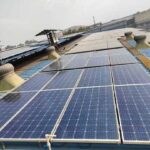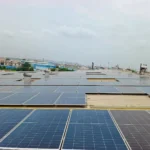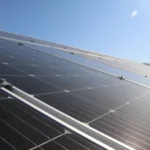Solar Power System Efficiency: How to Calculate for Residential, Industrial & Commercial Use
Solar Power System Efficiency: How to Calculate for Residential, Industrial & Commercial Use
Pre-Module Losses | Tolerance of rated power | Consider that the module does not deliver the power as stated in the data sheet. Manufacturers provide a tolerance, often up to 5%. |
Shadows | Shadows may be caused by trees, chimneys etc. Depending on the stringing of the cells, even partial shading may have a significant effect. | |
Dirt | Losses due to dirt up to 4% in temperate regions with some frequent rain. Up to 25% in arid regions with only seasonal rain and dust. | |
Snow | Dependent on location and maintenance effort. | |
Reflection | Reflection losses increase with the angle of incidence. Also, this effect is less pronounced in locations with a large proportion of diffuse light, i.e. clouds. | |
Module Losses | Conversion | The nominal efficiency is given by the manufacturer for standard conditions. |
Thermal losses | With increasing temperatures, conversion losses increase. These losses depend on irradiance (i.e. location), mounting method (glass, thermal properties of materials), and wind speeds. A very rough estimate is ~8% | |
System Losses ~ 14% | Wiring | Any cables have some resistance and therefore more losses. |
MPP | Ability of the MPP tracker in inverters to consistently find the maximum power point. | |
Inverter | Inverter efficiency | |
Mis-sized inverter | If the inverter is undersized, power is clipped for high intensity light. If it is oversized, the inverter’s efficiency will be too low for low intensity light. | |
Transformer | Transformer losses, in case where electricity has to be connected to a high-voltage grid( 11 KV and above ). | |
Operation & Maintenance | Downtime | Downtime for maintenance is usually very low for photovoltaic systems. |
Suggested Articles

How to Maintain Solar Power System for Homes, Industries & Commercial Buildings
A solar power generating system converts sunlight into electricity for residential, industrial, and commercial use. This blog explains the components, working, and benefits of solar systems, helping you understand how to harness solar energy efficiently and sustainably.

Solar Panel Sizes and Features in Delhi/NCR: A Complete Guide
Planning to install solar panels in Delhi/NCR? Explore the different sizes, technologies, and key features of solar panels available for residential, industrial, and commercial use. Learn how to choose the right one for your energy needs and roof space.

Solar Savings Made Simple: Know Your Cost Cuts in 2025
Maximize your solar savings in 2025. Learn how solar energy reduces electricity costs for homes and businesses.

Everything You Need to Know About Solar PV Modules
Solar PV modules explained: how they generate electricity, their benefits, and why they’re key to renewable energy growth.

Complete Guide to Solar Panel Subsidy Scheme in Haryana
Solar power is not only less expensive, but it is also the most abundant source of clean energy.

Rooftop Solar: Reduce Your Electricity Bill and Increase Savings
Discover how installing a rooftop solar system can help you save on electricity bills, reduce peak demand charges, and take advantage of government incentives.

Industrial Solar Plants with Diesel Generator Backup: What You Need to Know
Discover how industries can efficiently run rooftop solar plants alongside diesel generators (DG). Learn the benefits, setup tips, and hybrid system strategies to ensure uninterrupted power and maximize energy savings.

How to Improve Energy Efficiency and Save Electricity Costs
Learn how energy conservation and efficiency can help you save electricity, cut costs, and make your home or business more sustainable